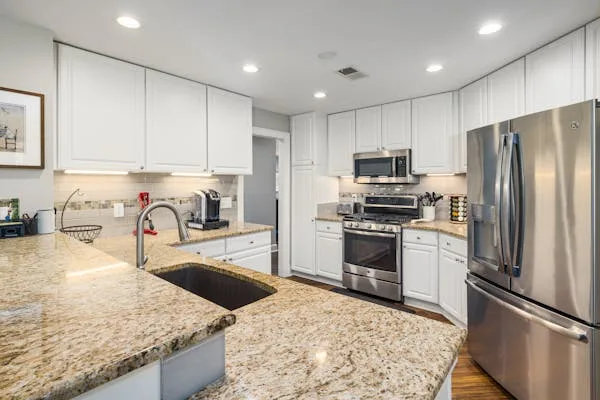Living in a compact area doesn’t mean sacrificing comfort or style. With the right approach, even the coziest room can feel open, airy, and welcoming. By incorporating smart design choices, creative storage solutions, and thoughtful decor, you can transform a small space into one that feels much larger. Here’s how:
1. Embrace Natural Light
Natural light can instantly make a space feel more expansive. Use sheer curtains or opt for adjustable blinds that allow maximum sunlight during the day. If you need privacy, consider frosted glass film or light-filtering shades. Adding mirrors helps reflect light throughout the room, enhancing the sense of space.
2. Stick to Light Color Palettes
Light shades help reflect light and visually open up a space. Whites, soft pastels, and neutral tones like light gray, beige, or pale blue can make a room feel more open. Painting walls, ceilings, and furniture in these hues creates a unified, airy feel. Accent colors can be added with decor like cushions, rugs, or artwork for a touch of personality.
3. Opt for Multi-Use Furniture
Choose furniture that serves more than one function. Look for items like storage beds, sleeper sofas, or coffee tables with hidden compartments. Folding chairs or extendable tables offer flexibility without taking up permanent space, helping to maintain an uncluttered environment.
4. Keep Clutter to a Minimum
A tidy space naturally feels larger. Regularly sort through belongings and keep only what’s necessary or meaningful. Use smart storage options like under-bed drawers, vertical shelving, and wall-mounted organizers to keep things neatly stowed away. A well-organized room feels more open and serene.
5. Think Vertically
When space is tight, make the most of your vertical real estate. Tall shelving units, wall-mounted desks, and hanging storage can help free up floor space. Pegboards and hooks also keep frequently used items within reach while maintaining a clean and open feel.
6. Use Reflective and See-Through Materials
Transparent and reflective materials like glass, acrylic, and mirrors create a sense of openness by letting light flow through and around them. Glass dining tables or acrylic chairs maintain sightlines and prevent visual clutter, making rooms appear more spacious.
7. Define Areas with Rugs and Furniture Layout
Create distinct zones within your space to enhance functionality. Use rugs to delineate a sitting area or dining nook, even in a studio layout. Thoughtfully arrange furniture to create flow—placing a sofa slightly away from the wall or using open shelving as a divider can make the layout feel more intentional and roomy.
8. Keep Decor Simple and Unified
Avoid overwhelming a small room with too many decorative elements. A minimalist approach with a few key statement pieces keeps the space feeling open. Stick to a consistent color scheme and use subtle patterns to add interest without creating clutter.
9. Add Depth with Layered Textures
Introducing various textures adds richness and dimension without crowding the space. Think of soft rugs, cozy throws, and textured pillows. Combining materials like wood, metal, and fabric can also enhance the room’s character and warmth.
10. Play with Visual Tricks
Use design techniques to visually enlarge your space. Horizontal stripes can make a room appear wider, while vertical lines draw the eye upward, making ceilings feel higher. Floor-to-ceiling curtains elongate the walls, and furniture with exposed legs allows light to circulate underneath, adding a sense of spaciousness.
Final Thoughts
Turning a small area into a space that feels big is all about creativity and intention. By maximizing light, selecting functional furniture, maintaining order, and choosing decor thoughtfully, you can craft a space that feels both larger and more livable. These tips not only enhance the appearance of your home but also improve how you experience it every day.

